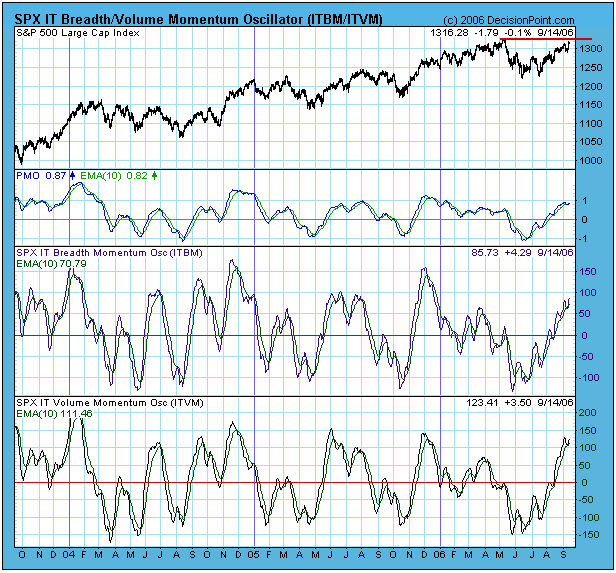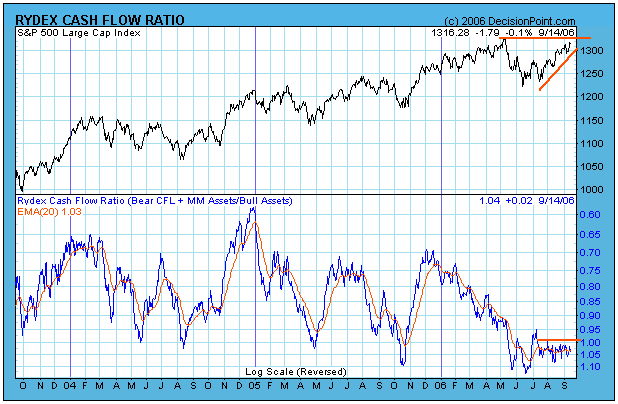The S&P 500 Index is approaching new 52-week highs, but there is short-term overhead resistance immediately ahead, and our primary medium-term indicators are becoming modestly overbought. Does this spell trouble for the bulls? Probably not. Overbought conditions are not necessarily a problem in a bull market, and there are still way too many bears for an important top.
Our first chart shows the S&P 500 Index with our three primary medium-term indicators (oscillators) – one each for price, breadth, and volume. As you can see they are approaching the overbought side of their range, but they are far short of being at their extreme limits, and they still allow for higher prices before they make a final top. Another thing to remember is that oscillators oscillate within a fixed horizontal range, prices normally do not. This means that, even though the oscillators top and begin to trend down, prices don't necessarily have to follow. In fact, you can see a few instances on the chart where prices continued higher even after the oscillators topped.

Our next chart is of the Rydex Cash Flow Ratio*, which I featured in an article two weeks ago. Note that the Ratio remains oversold (reflecting strong bearish sentiment), in spite of the fact that prices have continued higher. The condition of the Ratio is caused by a combination of aggressive buying of bear funds and timid acquisition of bull funds. This situation is extremely unusual, and I believe it must be relieved before we can expect a significant price decline. Relief will come when the bears give up and the bulls become more aggressive, ultimately causing the Ratio to move back up toward the top its trading range.

Bottom Line: The significant aspect of the market being overbought is that it is probably not a good time to be adding new long positions. Also, more caution is appropriate while the overbought condition is being worked off. Otherwise, I think the Rydex Cash Flow Ratio strongly suggests that prices will move higher, even after internals begin to correct downward. In other words, I think that people need to become more bullish before the rally will end.
Technical analysis is a windsock, not a crystal ball. Be prepared to adjust your tactics if conditions change.
